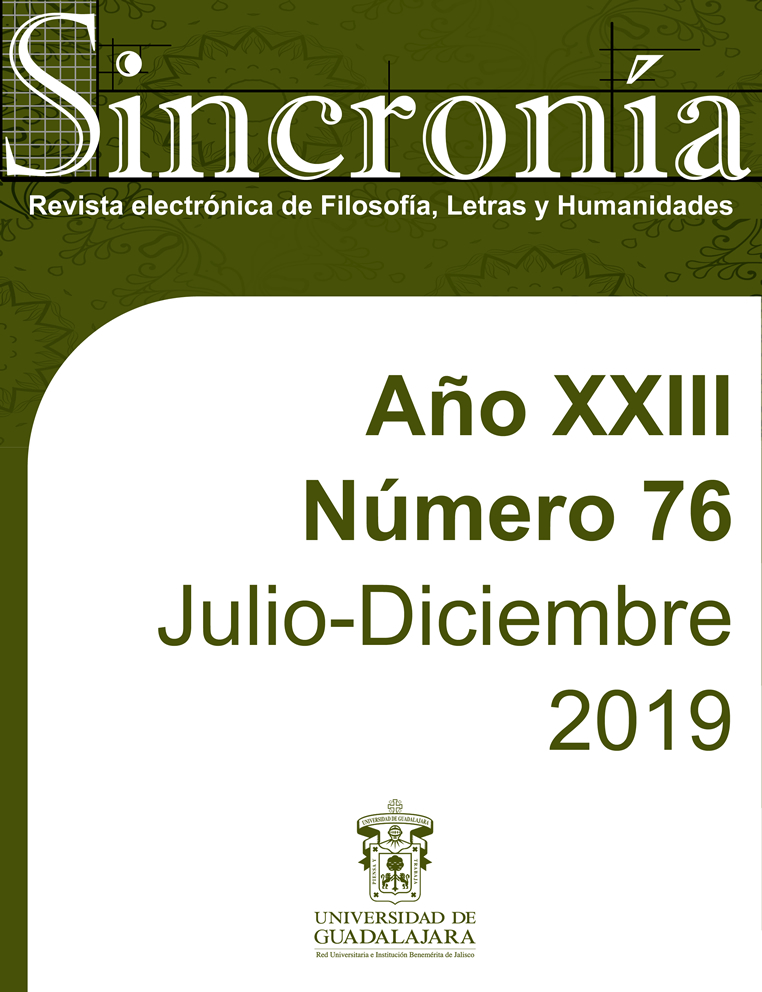¿Does the consciousness is the result of the function of our brain?
Keywords:
Conscience., Imagery., Brain., Mental state, Neural event, Physical state, Non-physical state, Physicalism., Cognitive Psychology.Abstract
At this work, I will talk about how the neuroscientists and neuropsychologists assume the conscience like a process that happens inside our head and that can be explained by following the brain activity. Their approach that wants to answer “what neuroscience understands by consciousness” is distorted such way the research deflects and answers something that wasn´t at the beginning of the work: “how our brain (mind) process the sensory information”.
The interest here is that scientists don´t notice the conceptual confusion they make and they believe that explaining and describing what they call the “process” the physical organ (brain) makes, it is possible to confer this organ conscious about that process. I mean, that the brain is able to realize the actions it performs: interprets, stores, encodes, manipulates information, among other.
To show the conceptual confusion they make, I will appeal to the Wittgenstein critic to the neuroscientist and psychologist work. Actually, the name of the profession, neuropsychologist, realize the use of confusing language to correlate –without a conceptual link-terms (neuroscience and neuropsychology) to physical states and no physical. Besides the neuropsychologist considers the brain like the “place” where occurs what they call “conscience”. Such idea just doesn´t substantive the conscience but the neuropsychologists pretend, I insist, without any conceptual link, build a physicalist definition of conscience, definition that would exceed the meaning of this term that we use in our daily life.
Downloads
References
Chabris, C.; Jerde, T.; Woolley, A.; Gerbasi, M.; Schuldt, J.; Bennett, S.; Hackman, R.; & Kosslyn, S. (12 de junio de 2006). Technical Report. Spatial and Object Visualization Cognitive Styles: Validation Studies in 3800 Individuals, No. 2. Recuperado de: https://www.researchgate.net/publication/238687967_Spatial_and_Object_Visualization_Cognitive_Styles_Validation_Studies_in_3800_Individuals
Chalmers, D. (1996). The Conscious Mind: In Search of a Fundamental Theory, Nueva York: Oxford University Press.
Kant, I. (2000). Crítica de la razón pura [Traducido al español de Kritik der reinen Vernunft]. Madrid: Alfaguara.
Kosslyn, S. M. y Ochsner, K. N. (1994). Mental Imagery, Universidad de Harvard.
Kosslyn, S. M., Thompson, W. L. y Ganis, G. (2006). The Case for Mental Imagery, Nueva York: Oxford U. Press.
McGinn, C. (2003). “(Can we solve the Mind-Body problem?, 1989) ¿Podemos resolver el problema Mente-Cuerpo?”, (trad. Hector Islas) en La naturaleza de la experiencia. Vol. I Sensaciones, Mayte Ezcurdia y Olbeth Hansberg (compiladores), México: UNAM.
Moulton, S. T. y Kosslyn, S. (2009). Imagining predictions: mental imagery as mental emulation, Phil. Trans. R. Soc. B (2009) 364, Department of Psychology, EU: Universidad de Harvard.
Última vez visitado: 8 de marzo de 2019:
https://royalsocietypublishing.org/doi/full/10.1098/rstb.2008.0314
Nagel T. (2003). “(What is it like to be a bat, 1974) ¿Cómo es ser un murciélago?” en La naturaleza de la experiencia. Vol. I Sensaciones, Maite Ezcurdia y Olbeth Hansberg (compiladores), México: UNAM.
Shanker, S. (1998). Wittgenstein’s remarks on the foundations of AI, EU: Routledge.
Tomasini, A. (2004). Ensayos de filosofía de la psicología, Guadalajara: Universidad de Guadalajara.
Downloads
Published
How to Cite
Issue
Section
License
Copyright (c) 2019 Abraham Ávila Tello de Meneses

This work is licensed under a Creative Commons Attribution-NonCommercial 4.0 International License.
You are free to:
- Share — copy and redistribute the material in any medium or format
- Adapt — remix, transform, and build upon the material
- The licensor cannot revoke these freedoms as long as you follow the license terms.
Under the following terms:
- Attribution — You must give appropriate credit , provide a link to the license, and indicate if changes were made . You may do so in any reasonable manner, but not in any way that suggests the licensor endorses you or your use.
- NonCommercial — You may not use the material for commercial purposes .
- No additional restrictions — You may not apply legal terms or technological measures that legally restrict others from doing anything the license permits.




























